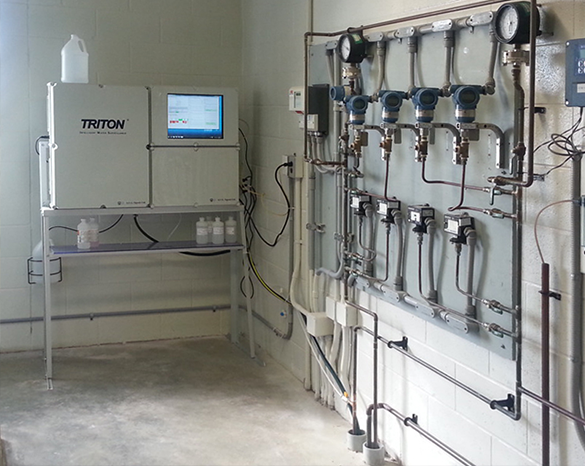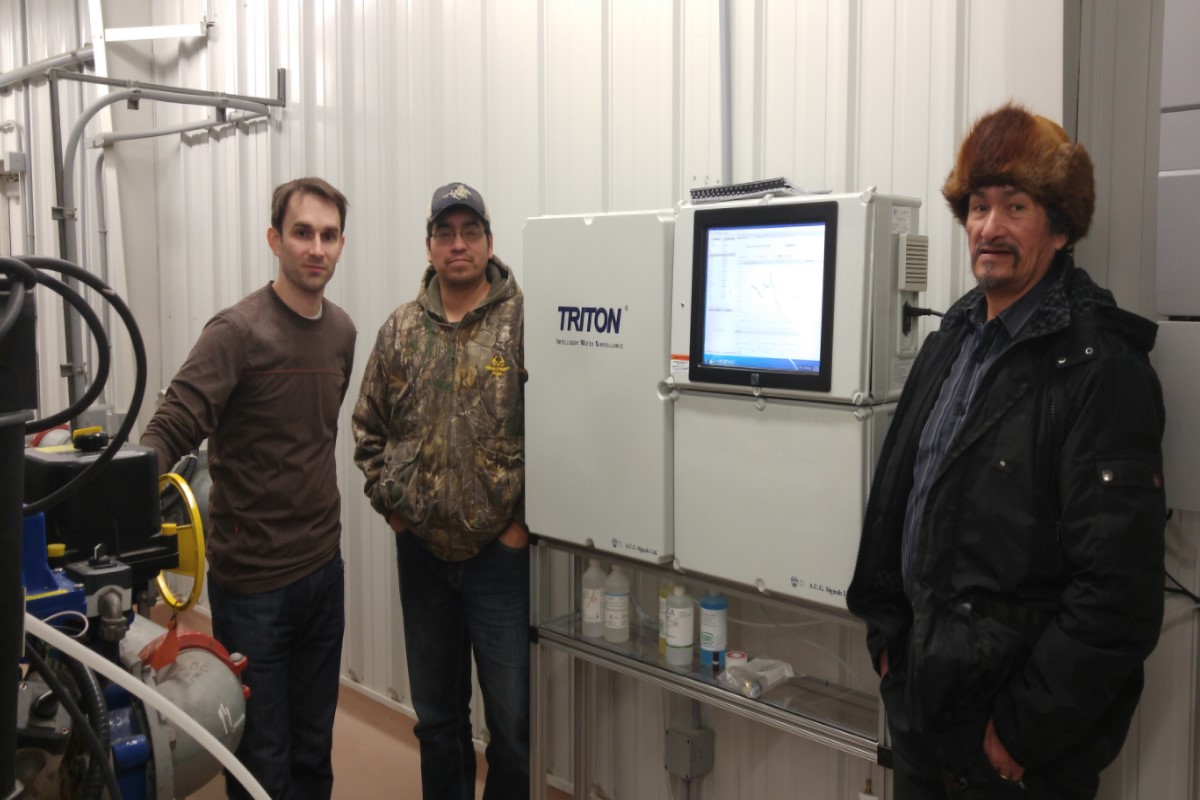When you add nitrates and phosphates to soil, these nutrients help plants thrive. Adding them add them to water, however, isn’t so good. When nutrient-rich fertilizers or sewage gets washed into lakes and rivers, they fuel an explosion of algae.
That algae can clog intake pipes of drinking water plants. It can make it difficult for fish to survive, using up oxygen as it decomposes. And it can sometimes produce toxins that contaminate drinking water — like it did in Toledo, Ohio in 2014, forcing 400,000 people to keep their taps turned off for days.
Unfortunately, current monitoring methods leave a lot to be desired. Technicians typically collect samples from the field once or twice a month and send them to the lab, where it may take a week or to analyze them. However, nutrient levels can fluctuate from day to day or even hour to hour.
For a full picture — and the ability to react swiftly to spikes in nitrates and phosphates — you need continuous, real-time monitoring. And that’s exactly what Toronto’s AUG Signals (AUG) set out to provide, with support from OWC.
A two-year Advancing Water Technologies (AWT) grant enabled AUG to work with Dr. Scott Mundle and his team of environmental chemists at the University of Windsor’s Great Lakes Institute for Environmental Research. Together, they developed a photonic sensor system that detects the particular wavelengths of light emitted by nitrates. Once installed, the monitoring device provides analysis of nitrate levels around the clock, beaming data to operators in real time.
A team effort
Creating a workable prototype meant overcoming several technical hurdles. For starters, water from a river or lake is often clouded with sediments. To prevent those sediments from interfering with spectral emissions, the researchers added a prefiltration step.
Meanwhile, to ensure the system could be produced and sold at an affordable price, they used off-the-shelf parts. Mundle’s team worked closely with engineers at AUG to ensure the different components functioned together smoothly.
Most importantly, AUG had to prove the system worked. The Windsor researchers provided access to samples from the Detroit River and validated the results from AUG’s detector against traditional chemical tests they ran in Mundle’s lab. “I think the success of it really came down to it actually being — in the best sense possible — a true collaboration,” he says.
Game-changing insights
To date, the results have been impressive. “We’re able to get about 90 to 95 per cent accuracy for all these samples,” says Cindy Dongxin Hu, Director of Environmental Monitoring and Quality Control at AUG Signals. “And it keeps on improving.”
Hu sees big potential for their nutrient analyzer. For example, if sudden spikes in nitrates are detected in one of their water sources, water treatment plant managers could automatically close that particular intake. Meanwhile, farmers could use the real-time data to adjust their fertilizing activities to reduce the risk of runoff.
The technology will also deepen our knowledge about the connection between nutrient levels, algal blooms, weather, water flow and other factors. “We really don’t necessarily understand all the drivers and the dynamic relationships between them,” says Mundle. “Real-time monitoring is a game changer, in my opinion.”
Big wins, big opportunities
The project, which wrapped up in 2018, proved the system works. Now, AUG is working to bring it to market. They’ve secured a grant from Canada’s National Research Council- Industrial Research Assistance Program (IRAP) and Alliance Program to continue partnering with the University of Windsor, and they’ve launched a new collaboration in Germany that will expand the monitoring platform, integrating sensors for parameters like dissolved oxygen, turbidity, selenium, sulphur and even hormones.
“I’m looking forward to seeing what the outcome next year will be,” says Hu. “I’m just very excited.”
They’re continuing to build on earlier AWT-funded work with Ryerson University to correlate nitrate levels with levels of phosphate, which is much harder to detect photonically.
Nor is that the only way the company has benefited from OWC. Another AWT-funded project with the University of Toronto helped them optimize a system to detect potentially cancer-causing trihalomethanes in drinking water. Today, AUG is planning that technology to be deployed in a growing number of places across Canada and further afield in Italy and China.
According to Mundle, these kinds of collaborations between industry and academia offer important training opportunities. “To be able to understand how things work in the real world or in industry is really an invaluable experience for grad students,” he says.
Meanwhile, Hu points to the full-time jobs her company has created as a result. AUG Signals hired a full-time chemical engineer in 2020, and they’re planning to recruit another environmental engineer in 2022.
“I think we’re lucky to have all these programs,” says Hu. “I really want to shout out for AWT.”
Want to learn more about AUG’s real-time nutrient monitoring?
Registration is NOW OPEN for AUG Signal’s webinar where they will introduce their real-time water monitoring system, TRITON, and provide applications and case studies of their technology. Registration is FREE for everyone!
Date: Thursday, July 29th, 12:00 – 12:45 pm



